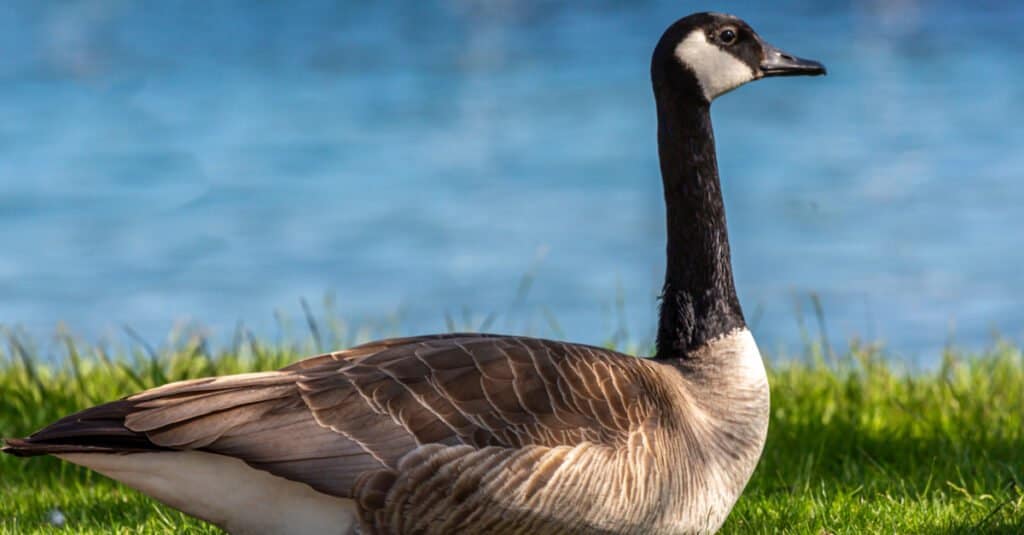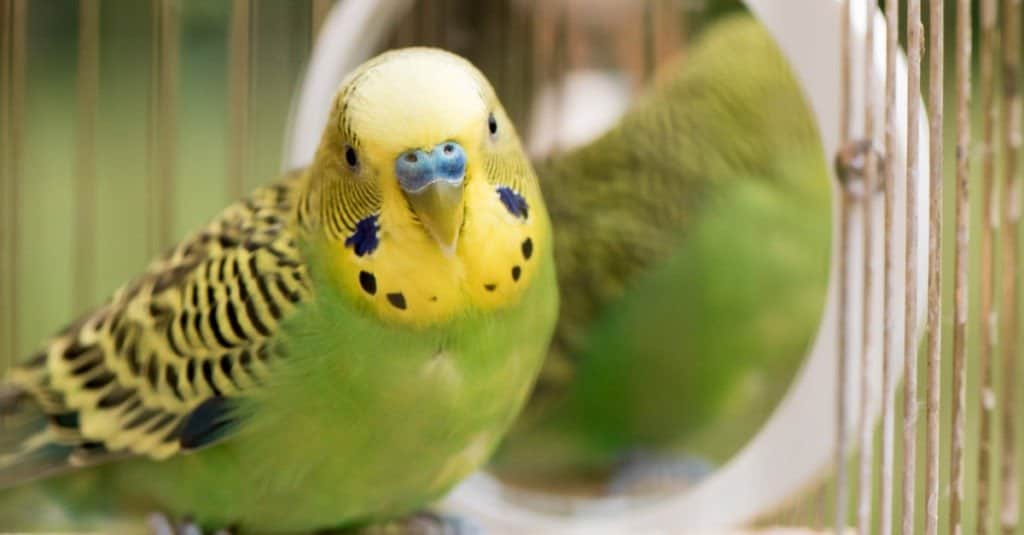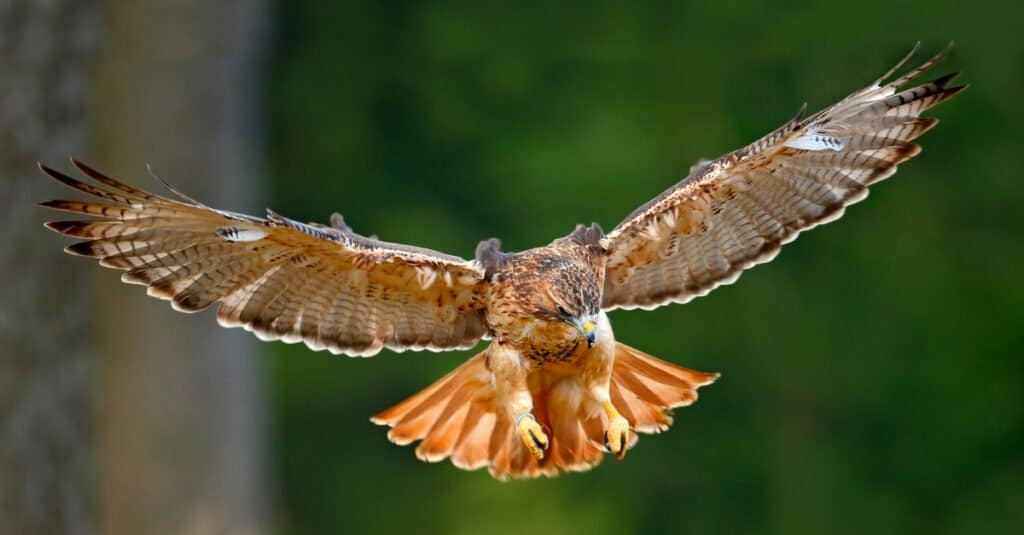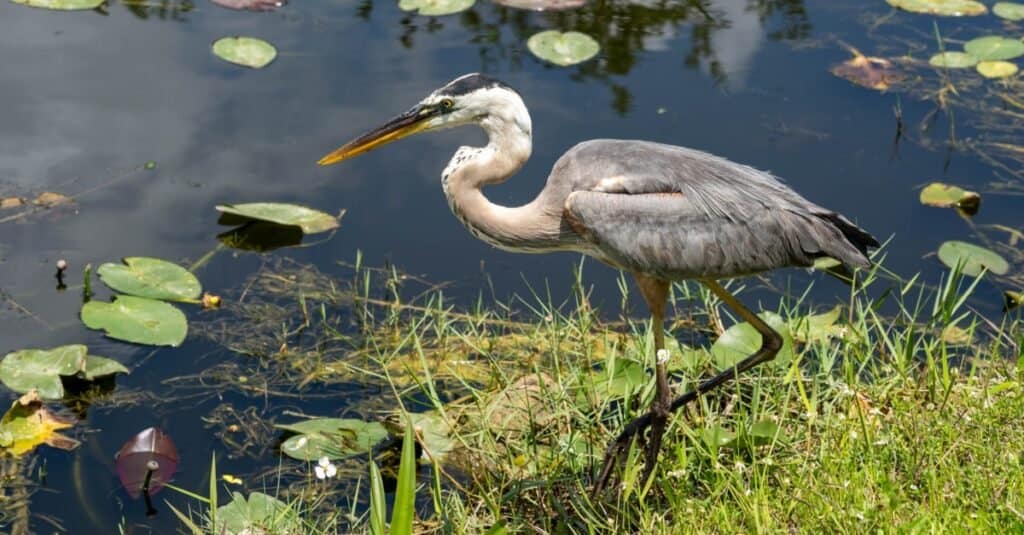Have you ever tried to balance on one leg? While some yoga masters make this move appear simple, it’s not as easy as it looks. It requires a considerable amount of concentration, strength, balance, and coordination to do for more than a few seconds. For humans, balancing on one leg is a great way to strengthen coordination, build endurance, and recalibrate your brain. People who practice yoga have known about the benefits of standing on one leg for years. That said, even yogi masters don’t go around standing on one leg all the time. Yet, this is exactly what some species of birds do on a regular basis. Some even go to sleep standing on one leg. Here’s a group of six that we have selected to showcase:

Birds that stand on one leg do so for a number of reasons. Primarily, it’s due to an adaptation that allows birds to retain heat more efficiently. Birds possess a complex web of arteries and veins that use concurrent blood flow to exchange heat. Known as rete mirabile, or “wonderful net” in Latin, this allows birds to exchange heat through their feet. By standing on one leg, these birds cut down on the amount of heat loss through their feet and legs. Meanwhile, some birds also stand on one leg as a tactic to help them hunt. By reducing the number of feet they have in the water, the birds appear more like a stick than a predator.
In this article, we’ll explore 6 different birds that stand on one leg. That way, the next time you see one of these birds in that position, you’ll know that they’re not just working on their balance.
#6: White Stork

Storks have some of the longest beak and legs in the world.
©iStock.com/Simon11uk
The white stork is a member of the stork family Ciconiidae. It gets its name from its predominantly white plumage, although the edges of its wings and tail appear black. They range throughout Southern Africa, Europe, Southwestern Asia, and the Indian subcontinent. Since they rely on air thermals to fly long-distance, they rarely migrate over water. White storks live in wetland habitats as well as grasslands and fields and shun densely forested areas. Known for their social nature, white storks live in small groups during the breeding season, and large colonies during winter. Their diet consists of a wide range of prey including fish, amphibians, small mammals, small birds, and reptiles. Typically, white storks measure 39 to 45 inches long with a wingspan between 61 to 85 inches. Given their long, orange-colored legs lack feathers, you can often see these birds that stand on one leg balancing in a field.
#5: Canada Goose

The Canada goose can often be seen resting on one leg near a pond or in a field.
©David McIntosh/Shutterstock.com
The Canada goose is one of the most recognizable members of the family Anatidae. These wild waterfowl are endemic to Canada and the northern United States but now thrive in introduced regions. You can find them throughout North America, along with Europe, New Zealand, Japan, and parts of South America. In addition to living around wetlands and grasslands, Canadian geese have also adapted to living in urban environments. On average, they measure 30 to 43 inches long and sport a wingspan of 50 to 73 inches. Their distinctive plumage appears black on the head and neck, white on the chin and underparts, and brown elsewhere. Canada geese eat a mostly herbivorous diet, but will also eat insects and small fish. When not begging for food, you can often find these birds that stand on one leg relaxing by a pond.
#4: Budgerigar

Budgies are among the most popular parrots kept as pets, and often perch on one leg in their cage.
©Vyaseleva Elena/Shutterstock.com
Also known as the common parakeet or simply parakeet, the budgerigar is a small parrot in the family Psittaculidae. It’s the only member of its genus Melopsittacus, and one of the most common birds kept in captivity. In their native home of Australia, budgerigars or “budgies” live in forests, grasslands, and scrublands. That said, some wild populations now also live in Florida and Puerto Rico. On average, they measure 7 inches long and sport a wingspan of around 12 inches. Budgies feature bright green plumage with a yellow face and black and yellow wings. That said, you can find them in a wide range of colors in captivity including red, blue, yellow, and gray. Their diet primarily consists of seeds, although they also eat fruits, berries, and vegetable matter. People who own pet budgies will often see these birds that stand on one leg asleep while balancing on a perch.
#3: Red-Tailed Hawk

Red-tailed hawks will stand on one leg as they rest between hunting trips.
©Ondrej Prosicky/Shutterstock.com
The red-tailed hawk is another one of the birds that stand on one leg. Sometimes known colloquially as the chickenhawk, the red-tailed hawk is a member of the hawk, eagle, and harrier family Accipitridae. Red-tailed hawks range throughout North America, where they rank as one of the most common raptor species. A large species, they measure 18 to 26 inches long and sport a wingspan between 3 feet, 7 inches, and 4 feet, 8 inches. It gets its name from its rufous-colored tail, whereas the rest of its plumage varies depending on the subspecies. They eat a wide variety of foods and their diet varies according to their environment. That said, they’ll eat foods including rodents, insects, small birds, amphibians, and reptiles including snakes. In the wild, you’ll often see a red-tailed hawk perched up on one leg while it rests between hunting forays.
#2: Great Blue Heron

Great blue herons will stand on one leg very still while hunting.
©ttomasek15/Shutterstock.com
The great blue heron is a large wading bird in the family Ardeidae. It typically lives in wetland and coastal habitats where it can access food. Great blue herons breed in the northern United States and southern Canada and overwinter in Mexico, Central America, and the Caribbean. That said, you can find them year-round throughout more temperate regions of the United States. The great blue heron gets its name from its large size and distinctive color. Generally, they measure around 36 to 54 inches long and weigh between 4 to 7.9 pounds. Their plumage mostly appears blue-gray, with gray-white streaking on their front, reddish thighs, and black markings on the head and neck. Their diet mainly includes fish, although they’ll also eat small mammals, amphibians, and reptiles such as snakes. They often stand on one leg while hunting to try and reduce their presence and lure in prey.
#1: American Flamingo

The American Flamingo is the only flamingo species endemic to North America.
©Ondrej Prosicky/Shutterstock.com
Also known as the Caribbean flamingo, the American flamingo is a large wading bird in the family Phoenicopteridae. While closely related to the greater and Chilean flamingos, it is now considered a distinct species. It represents the only flamingo species endemic to North America, although it also lives in the Caribbean, South America, and the Galapagos Islands. American Flamingos live in wetlands including lagoons, mudflats, lakes, and shallow coastal regions. On average, they measure 47 to 57 inches long and weigh between 4.9 to 6.2 pounds. Like other flamingos, their plumage appears reddish-pink, a color they get from their diet of crustaceans, predominantly shrimp. Among birds that stand on one leg, flamingos may be the bird people most often associate with this behavior. You can often see American flamingos balancing on one leg in an attempt to preserve body heat.
The photo featured at the top of this post is © IndreJeg/Shutterstock.com
Thank you for reading! Have some feedback for us? Contact the AZ Animals editorial team.






